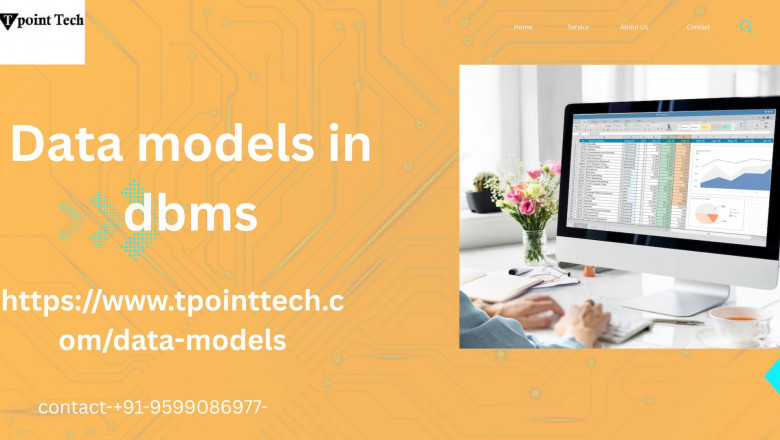views
Understanding Data Models in DBMS
Ever felt like trying to build something without a blueprint? Confusing, right? You wouldn't just start throwing bricks together and hope for a sturdy house. Similarly, when we talk about organizing and managing vast amounts of information in a Database Management System (DBMS), we rely on blueprints called data models. These models are the fundamental structure that dictates how data is organized, accessed, and related within a database. Think of them as the architect's plans for your digital information world.
At its core, a data model is an abstract representation of the data structures that are used in a database. It defines not only the types of data that can be stored but also the relationships between different pieces of data, the constraints that govern the data, and how this data can be manipulated. Without a well-defined data model, a database would be a chaotic mess, making it difficult to retrieve meaningful information and maintain data integrity.http
Why are datamodels in dbms so crucial? Imagine trying to find a specific book in a library where the books are just piled randomly on the floor. It would be a nightmare! A data model acts like the library's cataloging system, providing a logical structure that allows us to efficiently locate, understand, and utilize the information stored within the database. It provides a common language and understanding between database designers, application developers, and end-users.
Over the years, various types of data models have evolved, each with its own strengths and weaknesses, making them suitable for different kinds of applications. Let's explore some of the most common ones:
1. Hierarchical Model: This was one of the earliest data models, organizing data in a tree-like structure with a one-to-many relationship between parent and child nodes. Think of a family tree where one parent can have multiple children, but each child has only one parent. While simple to understand, it can become complex to represent many-to-many relationships.
2. Network Model: An extension of the hierarchical model, the network model allows for more complex relationships, including many-to-many connections. It uses a graph-like structure where a record can have multiple parent and child records. While more flexible than the hierarchical model, it can still be challenging to navigate and implement.
3. Relational Model: Introduced by E.F. Codd in the 1970s, the relational model is the most widely used data model today. It organizes data into tables (relations) with rows (tuples) representing records and columns (attributes) representing fields. Relationships between tables are established through common attributes (keys). Its simplicity, flexibility, and powerful query language (SQL) have made it the dominant model for most database applications. Think of it like a well-organized spreadsheet where each sheet is a table and you can link information across different sheets.
4. Entity-Relationship (ER) Model: This is primarily a conceptual and high-level data model used for designing databases. It represents real-world entities (like customers, products, orders) and the relationships between them using diagrams. The ER model is often used as a blueprint to design the logical structure of a relational database.
5. Object-Oriented Model: This model integrates concepts from object-oriented programming, treating data as objects with attributes and methods. It's well-suited for applications dealing with complex data types and relationships, such as multimedia databases and geographic information systems.
6. NoSQL Models: In recent years, with the rise of big data and web applications, a variety of NoSQL (Not Only SQL) data models have emerged. These models deviate from the traditional relational model to offer greater scalability and flexibility for handling unstructured or semi-structured data. Examples include document databases (like MongoDB), key-value stores (like Redis), column-family databases (like Cassandra), and graph databases (like Neo4j)
Choosing the right datamodels in dbms is a critical decision that impacts the efficiency, scalability, and maintainability of the database. Factors like the type of data, the relationships between data elements, the volume of data, and the specific requirements of the application all play a role in this selection process.
In essence, data models provide the essential framework for organizing and managing the vast amounts of information that power our digital world. Understanding these models is key to designing effective and efficient database systems that can meet the ever-growing demands of modern applications. Just like a well-thought-out blueprint leads to a well-constructed building, a well-designed data model leads to a robust and reliable database.














Comments
0 comment